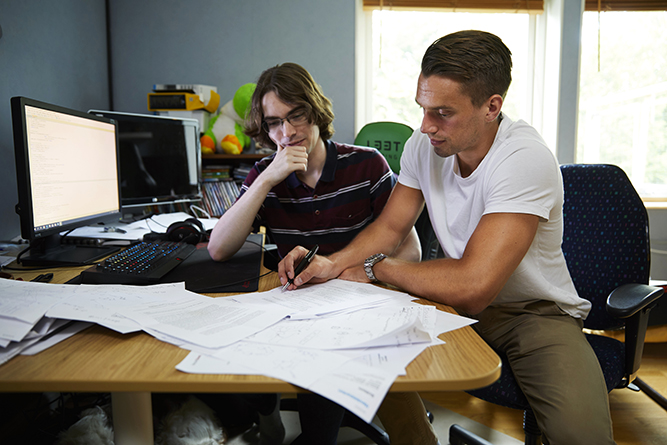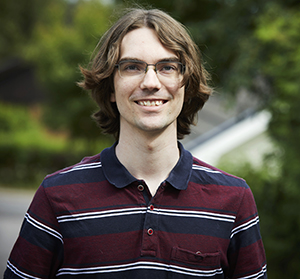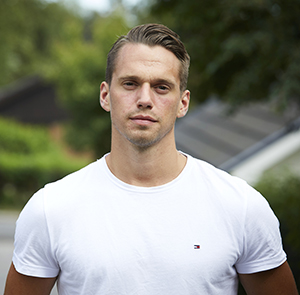A new software that democratises AI development
A new piece of software is making it easier to create solutions within AI (artificial intelligence). The program, QuantumNet, has been produced by KTH students who want more people to be involved in the creation of AI solutions. In addition, the program enables AI experts to develop AI models more efficiently.

Currently, if you want to create an AI model, you need programming skills, an in-depth knowledge of mathematics and expertise in AI. The QuantumNet program lowers the threshold for people who want to create AI solutions. It does away with the need for coding and programming skills, as well as in-depth knowledge of mathematics and AI. Many elements, such as visualisation and dimension customisation, are automated.

“You only need to have been given a general introduction to AI in order to be able to use QuantumNet. You can then dive straight into creating AI models,” says Martin Isaksson, who graduated in Civil Engineering from KTH last year and has produced the software together with final-year student Robert Lundberg.
Coding and programming have been replaced by a drag and drop function. According to Lundberg, there are a number of different AI methods and models that consist of quite standardised “building blocks”.
“In our application, these models are represented as actual blocks. The user can then drag these blocks to a workspace and connect them together however they want. All the hassle of connecting and creating the actual code is eliminated by our software. This means that you can easily create the AI models you want,” he says.
Once the program is well-run and the model is trained, all relevant information is visualised in real time.
“You can see how good it has become, get samples of how your result looks for a specific input on the current, not fully trained, model,” says Lundberg.
In order to test and demonstrate how effective the program is, Isaksson chose to do his master´s thesis with as well as without QuantumNet. In his master´s thesis, he studied a deep neural network that segmented muscular stem cells from microscope images. The network had a special architecture, and without QuantumNet he had to experiment, which resulted in the production of an extensive code , a process that took a couple of months to complete. With QuantumNet, it took around five minutes to assemble the same deep neural networks and press play.

“This type of streamlining and simplification is necessary in order to be able to democratise AI and get it out into the public domain. At present, there are only a few people who can build and use AI models,” says Isaksson.
However, facilitating AI development for non-experts is not what Isaksson and Lundberg have focused on – this has been an unexpected extra. They have chosen to direct their work towards AI experts, who want to work more efficiently. In one area, Deep Reinforcement Learning, it is particularly difficult to create such AI models.
“With our program, we have made it easy to use exactly this type of AI. This has aroused the interest of companies within the gaming industry and the self-driving vehicle industry. An investment company from California that focuses on the vehicle industry has contacted us,” says Isaksson.
QuantumNet is currently in a beta version, but the goal is that a final version will be available during or after this summer.
“Our next step is to scale up the company and release the product onto the market. We are in contact with several different companies who have expressed and interest in the technology. Some of them belong to the biggest corporations in the world, and they have asked to receive a trial version of QuantumNet,” says Lundberg.
Lundberg and Isaksson have also been admitted to the NVIDIA Inception Programme . This is a programme where start-ups within AI can learn from experts within deep learning and showcase emerging technologies.
Håkan Soold